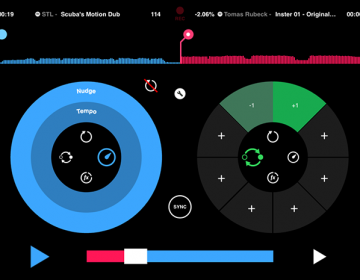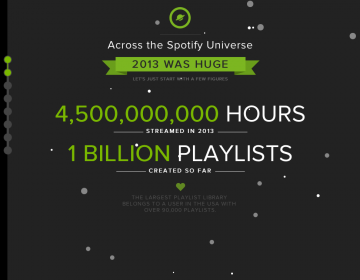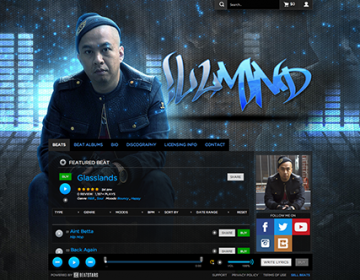Bandcamp is Still the Best Music Streaming and Discovery Platform

By Ruben Lone
I am an avid Spotify user with plenty of esoteric playlists, starred tracks, and an ongoing music sharing conversation with many of my friends. And Spotify is great for digging into classic artists whose entire discographies have been made available by their record labels. Though I haven’t given it a second thought due to multiple crashes on launch day, I’m sure Beats Music does its job just as well, with 20 million songs and an allegedly personalized discovery experience. But amidst these and other competing music streaming platforms, it seems the focus is to generate money via an appealing and hefty library of music at a low cost. Spotify constantly features pop stars on the front page, makes pretty uniformed music recommendations based on what I’ve been listening to, and its radio is a predictable application which fails to launch stations based on deeper artists’ cuts. And while Beats Music is powered by a hand-picked database of endless music, the featured artists on its promotional campaigns show off some respectable, yet very obvious choices like Kendrick Lamar, Green Day, Miles Davis, and Fleetwood Mac. Let me clarify again that all of these artists are great! They’re just not new.
It’s surprisingly how frequently I’m asked about music discovery methods, and as any music obsessive knows, it’s not as simple as logging into one site and being fed from a pre-selected list. On any given day, I’ve probably bounced around 10-15 SoundCloud profiles, sifted through the stark text and catalog numbers on Discogs, roamed the recent posts, podcasts, and mixes on a number of blogs and music journalisms sites, navigated to several artists’, labels’, and booking agencies’ websites and Twitter accounts, and received files and links from friends all over the industry. But one website and distribution platform that truly values function, fairness, and artistry over popularity and mass appeal, and quality over quantity, is Bandcamp.
Bandcamp was founded in 2008 by Ethan Diamond and Shawn Grunberger, less as means of streaming music and more as an outlet for musicians to share and distribute their work as they saw fit. Using the DIY-model, artists could creating revenue whilst avoiding the major label industry, which at the time was looking dire. The company has since grown to be a vehicle for artists to freely share their music and merchandise and reap the benefits of a close fan relationships. The perfect site for limited editions of tangible goods and unlimited editions of digital music, Bandcamp’s model doesn’t rely on hefty promotion campaigns to spread its brand and gain more customers. Rather, the details and functionality of site make it a transparent, stable option for any musician or label to distribute music directly to fans.
Bandcamp’s landing page features a player for Bandcamp Weekly, a weekly radio show hosted by chief curator Andew Jervis, featuring new artists across the site. Every week, the playlist is curated according to a specific theme, and features a variety of new and exciting artists–the majority of whom I’ve never heard. There has yet to be an engine of hand-selected music sourced from its own platform, curated by music professionals, with as much functionality and care of selection as this one. To top it off, the player sports wishlist buttons and buy links for all of the artists included.
The Fan Spotlight places special interest on fans who have curated interesting collections of music purchased from Bandcamp. Fan pages, much like artist pages, include album art and personal descriptions of the record, as well as an option to select a favorite track from the release. As a fan, you can follow artists and other fans, and compile albums into wish lists for later purchases. The newly released Bandcamp app consolidates your entire music library on your phone, and allows you stream tracks and albums you’ve purchased. The UI is modeled after the website, with clean formatting and friendly graphics.
The discover section on Bandcamp surprises with its thoroughness and copious genre options. These selections are easily filtered by best-selling, staff picks, new arrivals, and artist-recommended, meaning that discovery is generated by the tastes of the various user bases of the Bandcamp engine, not just the hired staff. Album art is displayed prominently but minimally, without favoring one musician’s work over another.
Finally, the “Selling Right Now” portion of the homepage shows a live feed of music sales, most of which are singles for around $2 and albums for around $14. The stream updates constantly to showcase Bandcamp’s quick turnaround for record sales and unwavering efficacy.
Bandcamp’s artist pages are microsites that are customizable, yet simple. Electronic musician Four Tet outfitted his page in a humorous Sendspace backdrop and sardonic Spotify header for a digital re-release of his 1999 album Glasshead. Sampha, on the other hand, chose a retro album art image on a plain white background and a wordmark of his name for his Sundanza EP. The brand, or lack thereof, shines on the Bandcamp pages, with the artist having full creative control over how they represent themselves and their music.
Sure, Bandcamp doesn’t offer discographies by Led Zeppelin or the latest Avicii remix, but if you take the time to scour the site and engage with fans and artists, you’re much more likely to discover new music on a more regular basis than by using large, search engine-type music libraries and streaming services. More importantly, the musicians get paid. And while many artists on Bandcamp have their music on Spotify, Beats, Rhapsody, and the like, why not spend a few extra bucks to help support an artist whose music you’re constantly playing? Bandcamp has some stubbornness in its design–you have to work with the structure you’re given in order to host your music on their site, but it does keep everyone’s page consistent.
Labels (and more prolific artists) can find the site useful for cataloging all of their work in a highly functional way with discographies and series. Newer artists can use the site as a landing page for all of their music streams and downloads, track insights, and integrate with Facebook pages.
I’ve found Bandcamp to be far less humble than its purported to be, especially with bigger artists using it as a tool for releases independent of their labels and one-off projects. The site and app supplement the mainstream methods of distribution, especially for niche artists who can leverage their support and sell physical merchandise. The pay-as-you wish model liberates both sides of the transaction, and actually gives listeners an opportunity to tell artists what their work is actually worth to an audience. And as far as pricing goes, I’m still willing to pay $1 per track even when the album is offered for free–it’s the least I can do as a fan.
















